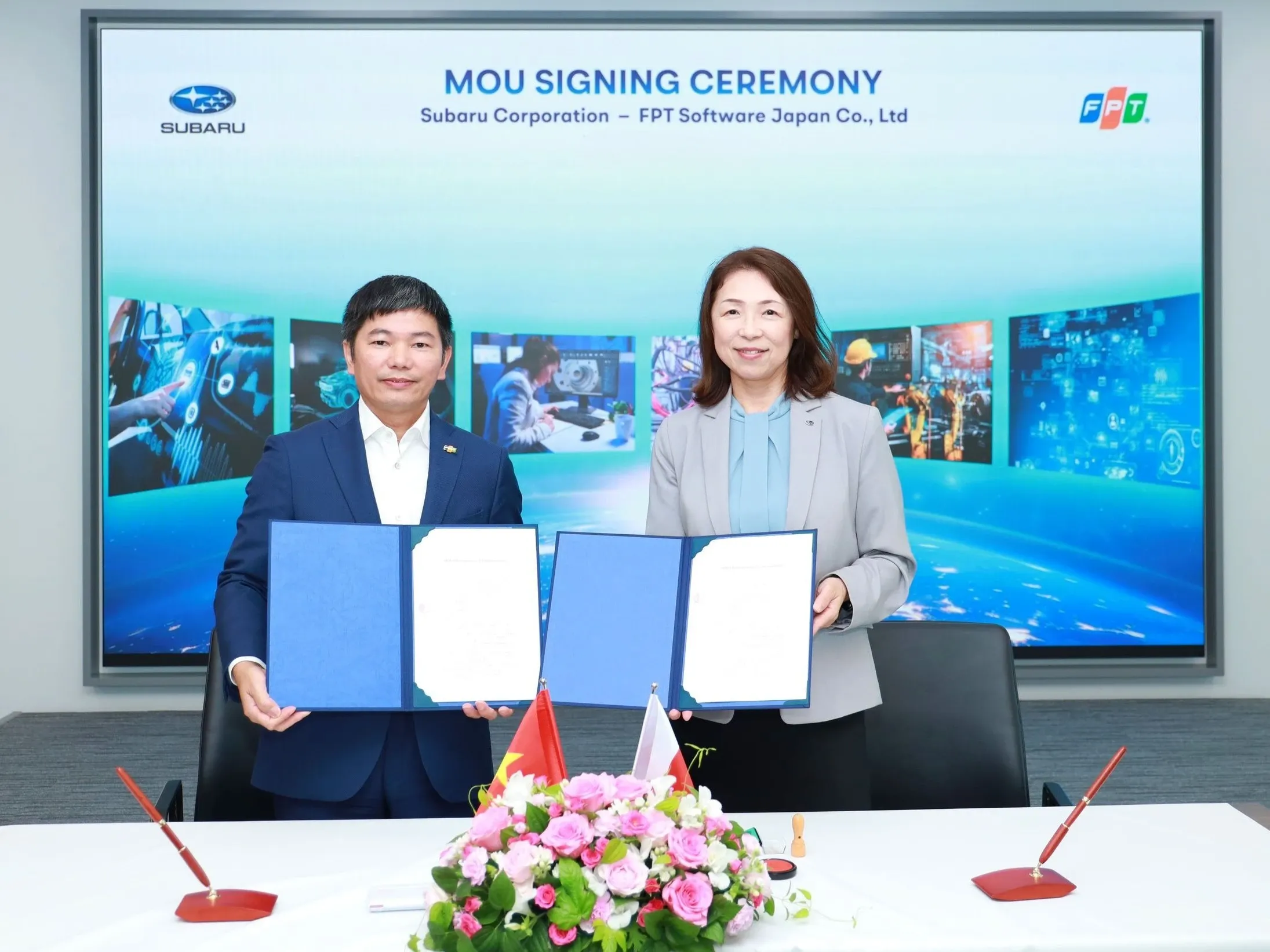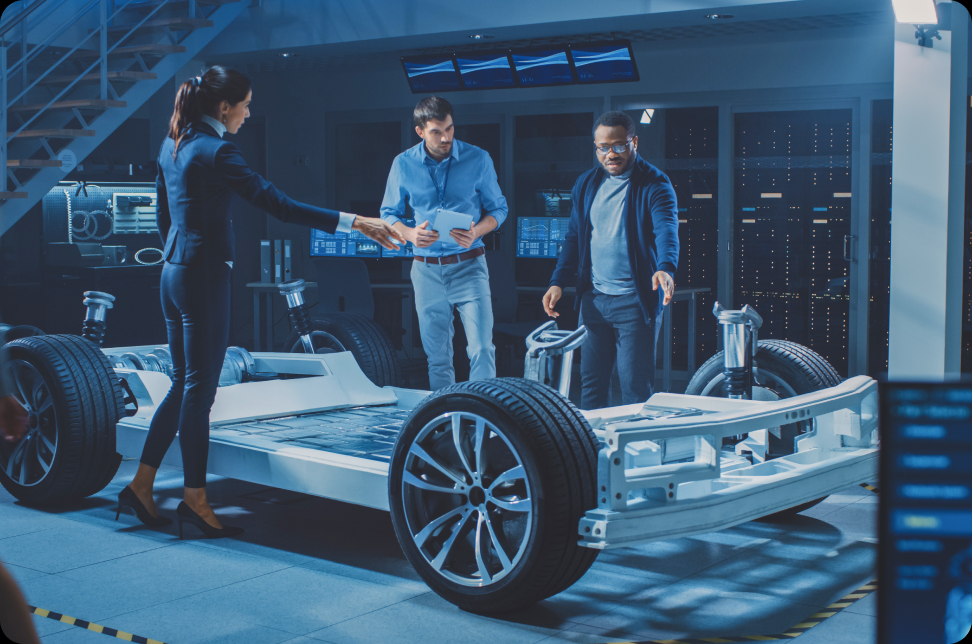

Gear Up for Next-Gen E/E Architecture with Zonal Compute: The Automotive Industry’s Game Changer
24-04-2024

<p class="MsoNormal" style="margin-bottom: 0.0001pt; text-align: justify;"><i><span style="font-size: 14pt; line-height: 21.6533px; font-family: Arial, sans-serif;"><font color="#ffffff"><span style="font-family: "Segoe UI";">The road to software-defined vehicles is paved with innovative E/E architecture. OEMs and chipmakers, make strategic choices now!</span><span style="font-weight: bolder;"><o:p></o:p></span></font></span></i></p><p class="MsoNormal" style="text-align: justify;"><o:p><font color="#ffffff"> </font></o:p></p><p class="MsoNormal" style="margin-bottom: 0.0001pt; text-align: justify;"><span style="font-family: "Segoe UI", sans-serif;"><font color="#ffffff"><span style="font-family: "Segoe UI";">Today's car market is all about digital features, just like smartphones. Features like self-driving cars, internet connectivity, electric power, and car sharing (ACES) are what consumers crave. To meet these demands, cars need to constantly update software, connect to digital services, and give drivers easy access to data. This is where electrical/electronic (E/E) architecture and software design come in – they're the key to reshaping the entire car and chip-making industries.</span><o:p></o:p></font></span></p><p class="MsoNormal" style="text-align: justify;"><span style="font-family: "Segoe UI", sans-serif;"><font color="#ffffff"> </font></span></p><p class="MsoNormal" style="margin-bottom: 0.0001pt; background-image: initial; background-position: initial; background-size: initial; background-repeat: initial; background-attachment: initial; background-origin: initial; background-clip: initial; text-align: justify;"><span style="font-family: "Segoe UI", sans-serif;"><font color="#ffffff"><span style="font-family: "Segoe UI";">Car E/E architectures have gone from basic setups with separate ECUs for each function, to a growing number of interconnected ECUs. Lately, domain-centralized architectures emerged, replacing multiple ECUs with a few powerful domain computers.</span><o:p></o:p></font></span></p><p class="MsoNormal" style="margin-bottom: 0.0001pt; background-image: initial; background-position: initial; background-size: initial; background-repeat: initial; background-attachment: initial; background-origin: initial; background-clip: initial; text-align: justify;"><span style="font-family: "Segoe UI", sans-serif;"><font color="#ffffff">The latest (5th generation) introduces zonal controllers and central computer units (see Exhibit 1). This design has the potential to handle more ECUs and simplify software but creates challenges for carmakers like latency and optimal ECU topology (placement), where industry designs differ greatly. This article dives into these trends and proposes strategies for players in the automotive industry.</font></span></p><p class="MsoNormal" style="margin-bottom: 0.0001pt; background-image: initial; background-position: initial; background-size: initial; background-repeat: initial; background-attachment: initial; background-origin: initial; background-clip: initial; text-align: justify;"><span style="font-family: "Segoe UI", sans-serif;"><font color="#ffffff"><br></font></span></p><div style="text-align: center;"><font color="#ffffff"><img src="https://imagemaaz2023.blob.core.windows.net/images/fpt-to-shape-nvidia-01.jpg" style="font-size: 1rem; width: 300px; display: block; margin-right: auto; margin-left: auto;"></font></div><p></p><div style="text-align: center;"><font color="#ffffff"><br></font></div><p class="MsoNormal" style="margin-bottom: 0.0001pt; text-align: center;"><span style="font-weight: bolder;"><i><span style="font-family: Arial, sans-serif;"><font color="#ffffff"><span style="font-family: "Segoe UI";">Pictures 1</span><o:p></o:p></font></span></i></span></p><p class="MsoNormal" style="text-align: justify;"><o:p><font color="#ffffff"> </font></o:p></p><p class="MsoNormal" style="text-align: justify;"><o:p><font color="#ffffff"> </font></o:p></p><h2 style="font-family: "Source Sans Pro", -apple-system, BlinkMacSystemFont, "Segoe UI", Roboto, "Helvetica Neue", Arial, sans-serif, "Apple Color Emoji", "Segoe UI Emoji", "Segoe UI Symbol"; color: rgb(33, 37, 41);"><font color="#ffffff"><span style="font-weight: bolder;"><span style="font-family: "Segoe UI", sans-serif;"><span style="font-family: "Segoe UI";">Harnessing the Power of 5</span><sup style="font-size: 24px;"><span style="font-family: "Segoe UI";">th</span></sup><span style="font-family: "Segoe UI";"> generation architecture to Drive Automotive Innovation</span></span></span><span style="font-weight: bolder;"><span style="font-size: 24pt; line-height: 37.12px; font-family: "Segoe UI", sans-serif;"><o:p></o:p></span></span></font></h2><p class="MsoNormal" style="margin: 3pt 0in 0.0001pt; background-image: initial; background-position: initial; background-size: initial; background-repeat: initial; background-attachment: initial; background-origin: initial; background-clip: initial; text-align: justify;"><o:p><font color="#ffffff"> </font></o:p></p><p class="MsoNormal" style="margin-bottom: 12pt; background-image: initial; background-position: initial; background-size: initial; background-repeat: initial; background-attachment: initial; background-origin: initial; background-clip: initial; text-align: justify;"><span style="font-family: "Segoe UI", sans-serif;"><font color="#ffffff">The biggest advantage of the latest architecture is simplifying the ECU layout. However, automakers need to consider different technical approaches during the switch. Here are the four key benefits:<o:p></o:p></font></span></p><p class="MsoListParagraphCxSpFirst" style="margin: 12pt 0in 12pt 0.5in; background-image: initial; background-position: initial; background-size: initial; background-repeat: initial; background-attachment: initial; background-origin: initial; background-clip: initial; text-align: justify; text-indent: -0.25in;"><font color="#ffffff"><span style="font-family: "Segoe UI", sans-serif;">1.<span style="font-variant-numeric: normal; font-variant-east-asian: normal; font-variant-alternates: normal; font-kerning: auto; font-optical-sizing: auto; font-feature-settings: normal; font-variation-settings: normal; font-variant-position: normal; font-stretch: normal; font-size: 7pt; line-height: normal; font-family: "Times New Roman";"> </span></span><span style="font-weight: bolder;"><span style="font-family: "Segoe UI", sans-serif;">Easier Software Updates (OTA):</span></span><span style="font-family: "Segoe UI", sans-serif;"> Many ECUs can create update bottlenecks and complexity, making it harder to ensure safety, reliability, regulations, and software authenticity. Zonal architecture consolidates these units, simplifying updates and allowing rollbacks if updates fail.<o:p></o:p></span></font></p><p class="MsoListParagraphCxSpMiddle" style="margin: 12pt 0in 12pt 0.5in; background-image: initial; background-position: initial; background-size: initial; background-repeat: initial; background-attachment: initial; background-origin: initial; background-clip: initial; text-align: justify; text-indent: -0.25in;"><font color="#ffffff"><span style="font-family: "Segoe UI", sans-serif;">2.<span style="font-variant-numeric: normal; font-variant-east-asian: normal; font-variant-alternates: normal; font-kerning: auto; font-optical-sizing: auto; font-feature-settings: normal; font-variation-settings: normal; font-variant-position: normal; font-stretch: normal; font-size: 7pt; line-height: normal; font-family: "Times New Roman";"> </span></span><span style="font-weight: bolder;"><span style="font-family: "Segoe UI", sans-serif;">Independent Hardware and Software Development:</span></span><span style="font-family: "Segoe UI", sans-serif;"> Separating hardware and software can speed up development. Zonal controllers, using software abstraction layers, can combine functions previously handled by separate ECUs. This reduces reliance on specific suppliers, shortens development times, and allows for faster innovation.<o:p></o:p></span></font></p><p class="MsoListParagraphCxSpMiddle" style="margin: 12pt 0in 12pt 0.5in; background-image: initial; background-position: initial; background-size: initial; background-repeat: initial; background-attachment: initial; background-origin: initial; background-clip: initial; text-align: justify; text-indent: -0.25in;"><font color="#ffffff"><span style="font-family: "Segoe UI", sans-serif;">3.<span style="font-variant-numeric: normal; font-variant-east-asian: normal; font-variant-alternates: normal; font-kerning: auto; font-optical-sizing: auto; font-feature-settings: normal; font-variation-settings: normal; font-variant-position: normal; font-stretch: normal; font-size: 7pt; line-height: normal; font-family: "Times New Roman";"> </span></span><span style="font-weight: bolder;"><span style="font-family: "Segoe UI", sans-serif;">More Powerful and Efficient Processors:</span></span><span style="font-family: "Segoe UI", sans-serif;"> Zonal controllers consolidate the functions of multiple ECUs. Smaller chip sizes improve power efficiency. New "system-on-chip" (SoC) designs combine central processing units (CPUs), memory, and specialized hardware accelerators. These accelerators enable precise data routing and independent processing. It's no surprise then, that the latest SoCs for zonal controllers use chip sizes of 16 nanometers (nm) or smaller.<o:p></o:p></span></font></p><p class="MsoListParagraphCxSpLast" style="margin: 12pt 0in 12pt 0.5in; background-image: initial; background-position: initial; background-size: initial; background-repeat: initial; background-attachment: initial; background-origin: initial; background-clip: initial; text-align: justify; text-indent: -0.25in;"><font color="#ffffff"><span style="font-family: "Segoe UI", sans-serif;">4.<span style="font-variant-numeric: normal; font-variant-east-asian: normal; font-variant-alternates: normal; font-kerning: auto; font-optical-sizing: auto; font-feature-settings: normal; font-variation-settings: normal; font-variant-position: normal; font-stretch: normal; font-size: 7pt; line-height: normal; font-family: "Times New Roman";"> </span></span><span style="font-weight: bolder;"><span style="font-family: "Segoe UI", sans-serif;">Simpler Wiring:</span></span><span style="font-family: "Segoe UI", sans-serif;"> Zonal controllers act as data input/output (I/O) hubs, often placed at the car's edge. This allows for a less complex wiring harness. This, in turn, promotes standardization, simplifies production automation, and lowers costs due to less specialized wiring skills needed. Considering that wiring harnesses can account for 20% of a car's E/E architecture budget, this is a significant benefit.<o:p></o:p></span></font></p><p class="MsoNormal" style="margin: 3pt 0in 0.0001pt; background-image: initial; background-position: initial; background-size: initial; background-repeat: initial; background-attachment: initial; background-origin: initial; background-clip: initial; text-align: justify;"><o:p><font color="#ffffff"> </font></o:p></p><h2 style="font-family: "Source Sans Pro", -apple-system, BlinkMacSystemFont, "Segoe UI", Roboto, "Helvetica Neue", Arial, sans-serif, "Apple Color Emoji", "Segoe UI Emoji", "Segoe UI Symbol"; color: rgb(33, 37, 41);"><font color="#ffffff"><span style="font-weight: bolder;"><span style="font-family: "Segoe UI", sans-serif;">The Zonal Controller Conundrum: Selecting the Most Cost-Effective Architecture</span></span><span style="font-weight: bolder;"><span style="font-size: 24pt; line-height: 37.12px; font-family: "Segoe UI", sans-serif;"><o:p></o:p></span></span></font></h2><p class="MsoNormal" style="margin-bottom: 0.0001pt; background-image: initial; background-position: initial; background-size: initial; background-repeat: initial; background-attachment: initial; background-origin: initial; background-clip: initial; text-align: justify;"><span style="font-family: "Segoe UI", sans-serif;"><font color="#ffffff">When designing zonal controllers, automakers and suppliers need to consider different use cases and applications to find the best fit for their needs. Here are four emerging approaches, each offering unique benefits at varying costs:<o:p></o:p></font></span></p><p class="MsoListParagraphCxSpFirst" style="margin: 12pt 0in 12pt 0.5in; background-image: initial; background-position: initial; background-size: initial; background-repeat: initial; background-attachment: initial; background-origin: initial; background-clip: initial; text-align: justify; text-indent: -0.25in;"><font color="#ffffff"><span style="font-family: Symbol; font-size: 1rem;">- </span><span style="font-weight: bolder;"><span style="font-family: "Segoe UI", sans-serif;">Basic I/O Aggregators:</span></span><span style="font-family: "Segoe UI", sans-serif;"> In the simplest form, zonal controllers act as gateways, relaying information between sensors and actuators and the car's central processing unit (CPU). This simplifies the wiring harness at the car's edge. However, for safety-critical applications, latency (delays) can be an issue. To address this, dedicated hardware for routing and switching data is often needed, offloading some work from the main CPU.<o:p></o:p></span></font></p><p class="MsoListParagraphCxSpMiddle" style="margin: 12pt 0in 12pt 0.5in; background-image: initial; background-position: initial; background-size: initial; background-repeat: initial; background-attachment: initial; background-origin: initial; background-clip: initial; text-align: justify; text-indent: -0.25in;"><font color="#ffffff"><span style="font-family: Symbol; font-size: 1rem;">- </span><span style="font-weight: bolder;"><span style="font-family: "Segoe UI", sans-serif;">I/O with Power Control:</span></span><span style="font-family: "Segoe UI", sans-serif;"> This builds upon the basic design by adding power control and distribution capabilities. Smart fuses enable precise power delivery to different vehicle areas, allowing trade-offs between safety and comfort features. Additionally, it allows for predictive load balancing and comprehensive monitoring of circuit parameters. This approach offers new ways to control and measure power flow, enabling features to be powered on or off individually instead of the entire car. This can lead to improved range and valuable data insights.<o:p></o:p></span></font></p><p class="MsoListParagraphCxSpMiddle" style="margin: 12pt 0in 12pt 0.5in; background-image: initial; background-position: initial; background-size: initial; background-repeat: initial; background-attachment: initial; background-origin: initial; background-clip: initial; text-align: justify; text-indent: -0.25in;"><font color="#ffffff"><span style="font-family: Symbol; font-size: 1rem;">-</span><span style="font-family: "Segoe UI", sans-serif;"> <span style="font-weight: bolder;">I/O with Computing Power:</span></span><span style="font-family: "Segoe UI", sans-serif;"> Zonal controllers can also include processing capabilities, particularly relevant for emerging "satellite sensors." These sensors separate the physical sensor unit from the processing unit that interprets its raw signals. This allows for simpler, more affordable sensors that can be easily replaced if damaged. Meanwhile, the more expensive processing unit is safely housed within the car's interior.<o:p></o:p></span></font></p><p class="MsoListParagraphCxSpLast" style="margin: 12pt 0in 12pt 0.5in; background-image: initial; background-position: initial; background-size: initial; background-repeat: initial; background-attachment: initial; background-origin: initial; background-clip: initial; text-align: justify; text-indent: -0.25in;"><font color="#ffffff"><font face="Symbol">- </font><span style="font-weight: bold; font-family: "Segoe UI", sans-serif;">The All-in-One Zonal Controller: </span><span style="font-family: "Segoe UI", sans-serif;">This combines all the functionalities mentioned above, making it the most advanced and expensive option. Interestingly, a recent McKinsey survey suggests that 53% of experts believe this will eventually become the dominant model.<o:p></o:p></span></font></p><p class="MsoNormal" style="text-align: justify;"><o:p><font color="#ffffff"> </font></o:p></p><h2 style="font-family: "Source Sans Pro", -apple-system, BlinkMacSystemFont, "Segoe UI", Roboto, "Helvetica Neue", Arial, sans-serif, "Apple Color Emoji", "Segoe UI Emoji", "Segoe UI Symbol"; color: rgb(33, 37, 41);"><font color="#ffffff"><span style="font-weight: bolder;"><span style="font-family: "Segoe UI", sans-serif;">The E/E Revolution: How Zonal and Central Architectures Are Transforming Industry Dynamics</span></span><span style="font-weight: bolder;"><span style="font-size: 24pt; line-height: 37.12px; font-family: "Segoe UI", sans-serif;"><o:p></o:p></span></span></font></h2><p class="MsoNormal" style="text-align: justify;"><span style="font-family: "Segoe UI", sans-serif;"><font color="#ffffff">Car manufacturers (OEMs), major suppliers (Tier-1 players), and chip makers face critical decisions in implementing new electrical/electronic (E/E) architectures, considering various factors across the value chain.<o:p></o:p></font></span></p><p class="MsoNormal" style="margin-bottom: 0.0001pt; background-image: initial; background-position: initial; background-size: initial; background-repeat: initial; background-attachment: initial; background-origin: initial; background-clip: initial; text-align: justify;"><span style="font-family: "Segoe UI", sans-serif;"><font color="#ffffff">They must understand which vehicle domains will be affected, identify strategic positions, and recognize that different domains have different requirements, with zonal controllers being suitable for areas like body control, powertrain, and chassis. (Exhibit 4 shows this visually).</font></span></p><p class="MsoNormal" style="margin-bottom: 0.0001pt; background-image: initial; background-position: initial; background-size: initial; background-repeat: initial; background-attachment: initial; background-origin: initial; background-clip: initial; text-align: justify;"><span style="font-family: "Segoe UI", sans-serif;"><font color="#ffffff"><br></font></span></p><div style="text-align: center;"><font color="#ffffff"><img src="https://imagemaaz2023.blob.core.windows.net/images/fpt-to-shape-nvidia-02.jpg" style="font-size: 1rem; width: 804px; display: block; margin-right: auto; margin-left: auto;"></font></div><p></p><div style="text-align: center;"><font color="#ffffff"><br></font></div><p class="MsoNormal" style="margin-bottom: 0.0001pt; text-align: center;"><font color="#ffffff"><span style="font-weight: bolder;"><span style="font-family: Arial, sans-serif;">Exhibit 4</span></span><o:p></o:p></font></p><p class="MsoNormal" style="text-align: center;"><o:p><font color="#ffffff"> </font></o:p></p><p class="MsoNormal" style="margin-bottom: 0.0001pt; background-image: initial; background-position: initial; background-size: initial; background-repeat: initial; background-attachment: initial; background-origin: initial; background-clip: initial; text-align: justify;"><span style="font-family: "Segoe UI", sans-serif;"><font color="#ffffff">The shift to zonal and central computer architectures in car E/E systems presents opportunities and challenges across the automotive value chain:</font></span></p><p class="MsoListParagraphCxSpFirst" style="margin-bottom: 0.0001pt; background-image: initial; background-position: initial; background-size: initial; background-repeat: initial; background-attachment: initial; background-origin: initial; background-clip: initial; text-align: justify; text-indent: -0.25in;"><font color="#ffffff"><span style="font-family: Symbol;">·<span style="font-variant-numeric: normal; font-variant-east-asian: normal; font-variant-alternates: normal; font-kerning: auto; font-optical-sizing: auto; font-feature-settings: normal; font-variation-settings: normal; font-variant-position: normal; font-stretch: normal; font-size: 7pt; line-height: normal; font-family: "Times New Roman";"> </span></span><span style="font-weight: bolder;"><span style="font-family: "Segoe UI", sans-serif;">Domains with High Compute Needs:</span></span><span style="font-family: "Segoe UI", sans-serif;"> ADAS, AD, and infotainment require significant processing power, likely necessitating dedicated central or domain compute units.<o:p></o:p></span></font></p><p class="MsoListParagraphCxSpMiddle" style="margin-bottom: 0.0001pt; background-image: initial; background-position: initial; background-size: initial; background-repeat: initial; background-attachment: initial; background-origin: initial; background-clip: initial; text-align: justify; text-indent: -0.25in;"><font color="#ffffff"><span style="font-family: Symbol;">·<span style="font-variant-numeric: normal; font-variant-east-asian: normal; font-variant-alternates: normal; font-kerning: auto; font-optical-sizing: auto; font-feature-settings: normal; font-variation-settings: normal; font-variant-position: normal; font-stretch: normal; font-size: 7pt; line-height: normal; font-family: "Times New Roman";"> </span></span><span style="font-weight: bolder;"><span style="font-family: "Segoe UI", sans-serif;">Software and Middleware: </span></span><span style="font-family: "Segoe UI", sans-serif;">Various domains require different software stacks, emphasizing the importance of automotive middleware solutions and the adoption of SOA for flexibility.<o:p></o:p></span></font></p><p class="MsoListParagraphCxSpMiddle" style="margin-bottom: 0.0001pt; background-image: initial; background-position: initial; background-size: initial; background-repeat: initial; background-attachment: initial; background-origin: initial; background-clip: initial; text-align: justify; text-indent: -0.25in;"><font color="#ffffff"><span style="font-family: Symbol;">·<span style="font-variant-numeric: normal; font-variant-east-asian: normal; font-variant-alternates: normal; font-kerning: auto; font-optical-sizing: auto; font-feature-settings: normal; font-variation-settings: normal; font-variant-position: normal; font-stretch: normal; font-size: 7pt; line-height: normal; font-family: "Times New Roman";"> </span></span><span style="font-weight: bolder;"><span style="font-family: "Segoe UI", sans-serif;">Collaboration and Integration: </span></span><span style="font-family: "Segoe UI", sans-serif;">Zonal and central compute units may accelerate the breakdown of functional silos, requiring deeper collaboration between tier-1 suppliers and OEMs.<o:p></o:p></span></font></p><p class="MsoListParagraphCxSpMiddle" style="margin-bottom: 0.0001pt; background-image: initial; background-position: initial; background-size: initial; background-repeat: initial; background-attachment: initial; background-origin: initial; background-clip: initial; text-align: justify; text-indent: -0.25in;"><font color="#ffffff"><span style="font-family: Symbol;">·<span style="font-variant-numeric: normal; font-variant-east-asian: normal; font-variant-alternates: normal; font-kerning: auto; font-optical-sizing: auto; font-feature-settings: normal; font-variation-settings: normal; font-variant-position: normal; font-stretch: normal; font-size: 7pt; line-height: normal; font-family: "Times New Roman";"> </span></span><span style="font-weight: bolder;"><span style="font-family: "Segoe UI", sans-serif;">New Ecosystems and Standards:</span></span><span style="font-family: "Segoe UI", sans-serif;"> Expect the formation of new industry ecosystems and standards, particularly for non-differentiating elements of automotive hardware and software.<o:p></o:p></span></font></p><p class="MsoListParagraphCxSpMiddle" style="margin-bottom: 0.0001pt; background-image: initial; background-position: initial; background-size: initial; background-repeat: initial; background-attachment: initial; background-origin: initial; background-clip: initial; text-align: justify; text-indent: -0.25in;"><font color="#ffffff"><span style="font-family: Symbol;">·<span style="font-variant-numeric: normal; font-variant-east-asian: normal; font-variant-alternates: normal; font-kerning: auto; font-optical-sizing: auto; font-feature-settings: normal; font-variation-settings: normal; font-variant-position: normal; font-stretch: normal; font-size: 7pt; line-height: normal; font-family: "Times New Roman";"> </span></span><span style="font-weight: bolder;"><span style="font-family: "Segoe UI", sans-serif;">Semiconductor Considerations:</span></span><span style="font-family: "Segoe UI", sans-serif;"> Semiconductor companies will focus on scalable computer platforms and explore collaboration models, with chiplets becoming more common.<o:p></o:p></span></font></p><p class="MsoListParagraphCxSpMiddle" style="margin-bottom: 0.0001pt; background-image: initial; background-position: initial; background-size: initial; background-repeat: initial; background-attachment: initial; background-origin: initial; background-clip: initial; text-align: justify; text-indent: -0.25in;"><font color="#ffffff"><span style="font-family: Symbol;">·<span style="font-variant-numeric: normal; font-variant-east-asian: normal; font-variant-alternates: normal; font-kerning: auto; font-optical-sizing: auto; font-feature-settings: normal; font-variation-settings: normal; font-variant-position: normal; font-stretch: normal; font-size: 7pt; line-height: normal; font-family: "Times New Roman";"> </span></span><span style="font-weight: bolder;"><span style="font-family: "Segoe UI", sans-serif;">Supply Chain Resilience:</span></span><span style="font-family: "Segoe UI", sans-serif;"> Capacity reservations may become more common, and foundries are expected to play a larger role in the automotive sector.<o:p></o:p></span></font></p><p class="MsoListParagraphCxSpMiddle" style="margin-bottom: 0.0001pt; background-image: initial; background-position: initial; background-size: initial; background-repeat: initial; background-attachment: initial; background-origin: initial; background-clip: initial; text-align: justify; text-indent: -0.25in;"><font color="#ffffff"><span style="font-family: Symbol;">·<span style="font-variant-numeric: normal; font-variant-east-asian: normal; font-variant-alternates: normal; font-kerning: auto; font-optical-sizing: auto; font-feature-settings: normal; font-variation-settings: normal; font-variant-position: normal; font-stretch: normal; font-size: 7pt; line-height: normal; font-family: "Times New Roman";"> </span></span><span style="font-weight: bolder;"><span style="font-family: "Segoe UI", sans-serif;">Tier-1 Competition and In-Sourcing:</span></span><span style="font-family: "Segoe UI", sans-serif;"> Tier-1 suppliers will compete in architecture design, while OEMs may focus on in-sourcing and customization, potentially leading to directed-buy arrangements.<o:p></o:p></span></font></p><p class="MsoListParagraphCxSpMiddle" style="margin-bottom: 0.0001pt; background-image: initial; background-position: initial; background-size: initial; background-repeat: initial; background-attachment: initial; background-origin: initial; background-clip: initial; text-align: justify; text-indent: -0.25in;"><font color="#ffffff"><span style="font-family: Symbol;">·<span style="font-variant-numeric: normal; font-variant-east-asian: normal; font-variant-alternates: normal; font-kerning: auto; font-optical-sizing: auto; font-feature-settings: normal; font-variation-settings: normal; font-variant-position: normal; font-stretch: normal; font-size: 7pt; line-height: normal; font-family: "Times New Roman";"> </span></span><span style="font-weight: bolder;"><span style="font-family: "Segoe UI", sans-serif;">Software Skills as a Differentiator:</span></span><span style="font-family: "Segoe UI", sans-serif;"> Strong software skills will be crucial, providing a competitive edge for companies.<o:p></o:p></span></font></p><p class="MsoNormal" style="margin-bottom: 0.0001pt; background-image: initial; background-position: initial; background-size: initial; background-repeat: initial; background-attachment: initial; background-origin: initial; background-clip: initial; text-align: justify;"></p><p class="MsoListParagraphCxSpLast" style="margin-bottom: 0.0001pt; background-image: initial; background-position: initial; background-size: initial; background-repeat: initial; background-attachment: initial; background-origin: initial; background-clip: initial; text-align: justify; text-indent: -0.25in;"><font color="#ffffff"><span style="font-family: Symbol;">·<span style="font-variant-numeric: normal; font-variant-east-asian: normal; font-variant-alternates: normal; font-kerning: auto; font-optical-sizing: auto; font-feature-settings: normal; font-variation-settings: normal; font-variant-position: normal; font-stretch: normal; font-size: 7pt; line-height: normal; font-family: "Times New Roman";"> </span></span><span style="font-weight: bolder;"><span style="font-family: "Segoe UI", sans-serif;">Balancing Costs and Benefits: </span></span></font><span style="font-family: "Segoe UI", sans-serif;"><font color="#ffffff">To meet customer demands, the automotive value chain must embrace zonal and central architectures while carefully balancing costs and benefits for optimal transition models over time.</font><font color="#1f1f1f"><o:p></o:p></font></span></p><p class="MsoNormal" style="margin-bottom: 0.0001pt; text-align: justify;"><font color="#ffffff"><a href="https://www.mckinsey.com/industries/semiconductors/our-insights/getting-ready-for-next-generation-ee-architecture-with-zonal-compute#/"></a></font></p><p class="MsoNormal" style="margin-bottom: 0.0001pt; background-image: initial; background-position: initial; background-size: initial; background-repeat: initial; background-attachment: initial; background-origin: initial; background-clip: initial; text-align: justify;"><span style="font-family: "Segoe UI", sans-serif;"><font color="#ffffff">Reference source: </font><font color="#1f1f1f"><o:p></o:p></font></span></p><p class="MsoNormal" style="margin-bottom:0in;margin-bottom:.0001pt;text-align:
justify;text-justify:inter-ideograph"><p style="text-align: left;"></p><div style="text-align: left;"><div></div></div></p><p class="MsoNormal" style="box-sizing: border-box; margin-top: 0px; margin-bottom: 0.0001pt; color: rgb(33, 37, 41); font-family: "Source Sans Pro", -apple-system, BlinkMacSystemFont, "Segoe UI", Roboto, "Helvetica Neue", Arial, sans-serif, "Apple Color Emoji", "Segoe UI Emoji", "Segoe UI Symbol"; font-size: 16px; font-style: normal; font-variant-ligatures: normal; font-variant-caps: normal; font-weight: 400; letter-spacing: normal; orphans: 2; text-indent: 0px; text-transform: none; widows: 2; word-spacing: 0px; -webkit-text-stroke-width: 0px; white-space: normal; background-color: rgb(255, 255, 255); text-decoration-thickness: initial; text-decoration-style: initial; text-decoration-color: initial; text-align: justify;"><a href="https://www.mckinsey.com/industries/semiconductors/our-insights/getting-ready-for-next-generation-ee-architecture-with-zonal-compute#/" target="blank" style="box-sizing: border-box; color: rgb(0, 123, 255); text-decoration: none; background-color: transparent;"><b style="box-sizing: border-box; font-weight: bolder;"><span style="box-sizing: border-box; font-family: Arial, sans-serif; color: rgb(17, 85, 204);">Getting ready for next-generation E/E architecture | McKinsey</span></b></a><o:p style="box-sizing: border-box;"></o:p></p>





